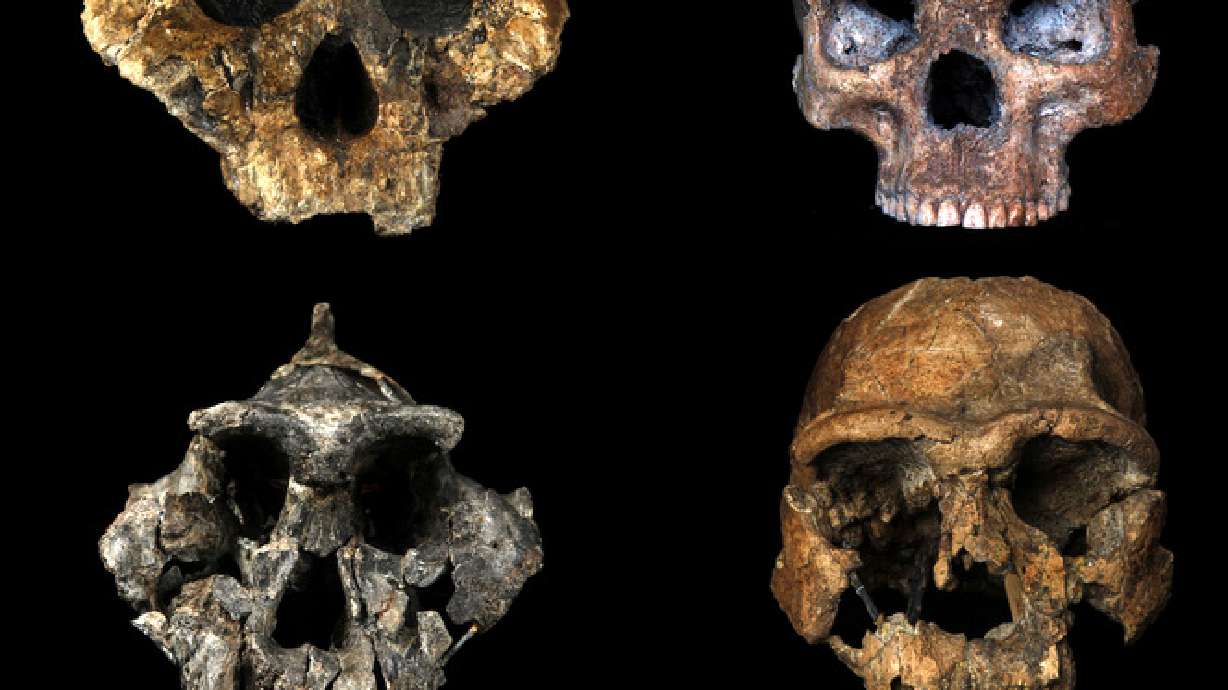Estimated read time: 2-3 minutes
This archived news story is available only for your personal, non-commercial use. Information in the story may be outdated or superseded by additional information. Reading or replaying the story in its archived form does not constitute a republication of the story.
SALT LAKE CITY — Humans are different than most other primates, not simply because we walk, talk, write poetry and study ourselves scientifically; We also eat differently than other animals related to us. While many primates are content with a few tropical leaves and some fruit, we demand things like grains, grasses and meat.
How and why we now eat what we eat is a central question among evolutionary biologists who study humans and their ancestors.
University of Utah researcher Thure Cerling led a group that now has some answers on what hominids were eating — and when. As it turns out, our ancestors were eating much like humans far earlier than was previously believed.
"For a long time, primates stuck by the old restaurants — leaves and fruits — and by 3.5 million years ago, they started exploring new diet possibilities — tropical grasses and sedges — that grazing animals discovered a long time before, about 10 million years ago" he said in a press release.
Primates developed and lived in closed, wooded areas where leaves and fruits, called C3 plants, were the primary source of energy. That was in spite of the faxct that savannahs with huge amounts of energy in the form of grasses and sedges, called C4 plants, were available about 10 million years ago.
Then, suddenly, hominins appeared and started tucking into the grassy treats of the African plains about 4 million years ago, according to the research.
That change in diet may be a factor in the development of more advanced hominin brains that occurred over the next few million years, as well as walking upright.
"If diet has anything to do with the evolution of larger brain size and intelligence, then we are considering a diet that is very different than we were thinking about 15 years ago," Cerling said.
Four new studies analyzed 173 teeth from dozens of individuals of 11 species of hominin. They looked at the amount and kind of carbon isotopes in the enamel of the teeth. Different ratios of carbon isotopes indicate whether an animal was eating C3 plants like fruits or C4 plants like tropical grasses and sedges.
But determining exactly who was eating what gets complicated. Animals eating certain insects, or even eating large grazing animals like zebras and buffalo, would appear as though they ate tropical grasses and sedges. But if they were eating things like antelope and rhinos, it would seem as though they were eating leaves and fruits.
Regardless of the difficulties of sorting out precise diets, the study represents a step forward in understanding our most ancient ancestors.
"At last, we have a look at 4 million years of the dietary evolution of humans and their ancestors," Cerling said.
The studies were published in the most recent issue of the Proceedings of the National Academy of Sciences.









